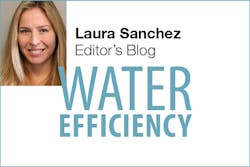Each summer, algae blooms take over lakes and bays as waters saturated with nutrients like nitrogen and phosphorus warm. These blooms are the product of a quick-growing algae that can be toxic to aquatic life and humans.
During a bloom, as algae settles to the bottom and decays, it depletes dissolved oxygen in the water and creates “dead zones,” or hypoxia, in which oxygen levels are so low that fish die. It’s ecologically devastating. Some algae blooms such as those in Lake Okeechobee, Lake Erie, the Chesapeake Bay, and the Gulf of Mexico grow so immense that they are visible from outer space.
Each year, scientists try to predict the extent of the harmful growth. While this year’s forecasts remain consistent with those of the past several years, the levels are alarming. The Lake Erie algae bloom forecast has a severity index of 7.5 on a scale of 1 to 10; the Chesapeake forecast predicts a 1.9-cubic-mile hypoxic region—nearly the volume of 3.2 million Olympic-size swimming pools; and the Gulf of Mexico forecast predicts an 8,185-square-mile dead zone—the third-largest Gulf of Mexico dead zone since measurements began 32 years ago. My colleague Janice Kaspersen discusses the increasing occurance of algae blooms in her Stormwater blog this week.
What can be done to stop this ever-expanding green slime?
Sandia National Laboratories is currently working on an experimental algae remediation project in the Salton Sea. The 350-square-mile body of water in Southern California receives agricultural runoff with high nutrient levels. Algae blooms are responsible for annual fish and avian die-offs.
The researchers’ goals with the project are twofold: they are testing ways to remove harmful algae from the water while evaluating algae’s use for energy production.
Sandia has designed an algae farming system called an “Algal Turf Scrubber” floway system. As water moves through the system, the algae, grown in gutter-like troughs, consumes the nutrients in the water, absorbing pollutants. Clean water emerges from the lower end. The system operates using solar-powered pumps.
The process simultaneously creates a renewable (and fast-growing) source of fuel. The algae can then be converted to energy using a Sandia Labs-patented fermentation process.
The team holds hope that the project will provide a remediation model that can be applied to algae blooms elsewhere.
“The early results we’re already getting from the Salton Sea appear to be superior to results from similar algae systems,” explains Sandia biochemist Ryan Davis. “It’s really promising.”
Is algae growth an issue in your organization? What have your experiences been with remediation?
